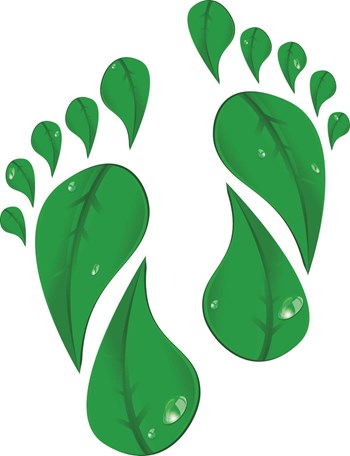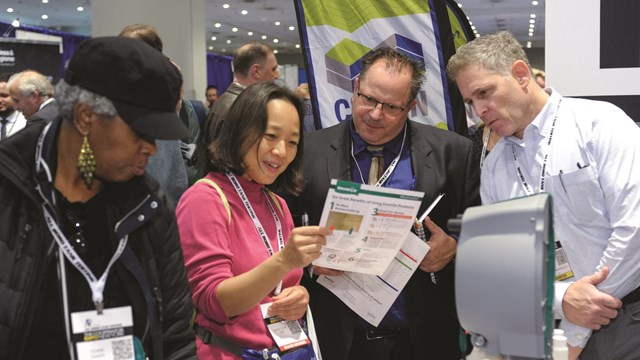
These days, it seems like everybody is looking to 'go green.' The term is shorthand for a movement of environmental awareness that involves everything from the way architects design new buildings and homes to the ways co-ops, condos and HOAs recycle their waste. In other words, green means to help the environment by reducing the amount of energy you use.
That’s why savvy boards and property managers are not only implementing the little things—such as turning down thermostats, shutting off air conditioners, and turning out lights in common areas when not in use—but investing in more substantial technology and greener equipment that uses less energy.
Let’s take a look at how New Jersey co-op and condo buildings are going green.
Green Houses
Bill Footer, senior program director for Massachusetts-based Conservation Services Group, which handles National Grid’s multifamily program, says the interest in condos becoming green has increased greatly over the last few years. “It seems a lot of communities these days have a green committee that will look for ways to decrease expenses,” he says. “They're concerned about energy use and want to do whatever they can.” And that, says Footer, is where his organization comes in. “We can help them reduce common area energy usage as well as in-unit energy usage.”
Surging numbers notwithstanding however, the green movement isn't universal—and part of that has to do with demographics and community mindset. But budget is the primary factor, says Mitchell Frumkin, PE, RS, CGP and president of Kipcon Inc., an engineering firm in North Brunswick.
“A famous man once said 98 percent of people are interested in going green but nobody wants to pay for it,” relates Frumkin. “People want to save the environment. They want to do everything they can but if they have to pay for it, in most instances, they are not going to do it.”
“In our work with co-ops and condos relating to exterior restoration and preservation, we have found boards and owners to be only intermittently interested in going green,” says Michael Granville, R.A. of Darius Toraby Architects in New York City, which recently worked on a green-focused project in Bernardsville. “But developers are another story. Many developers we work with have a serious commitment to sustainability, and make sure their projects follow green building paths, whether Leadership in Energy and Environmental Design (LEED) or more stringent internal standards.”
The majority of new residential buildings factor in environmental concerns into their design. This includes everything from building materials and solar power to the direction the front door faces.
Everything Old is New …
While more common in new construction, new technologies are nevertheless being integrated into existing condos and co-ops with a view to cutting energy use and reducing the carbon footprint of these residential communities.
“There’s a lot of technology in terms of monitoring the equipment you have,” explains Frumkin. “For example, I’m going to use a boiler as an example. You have a boiler and it runs and runs and runs and people pay for the energy it uses. That’s the end of the story. There’s technology out there that’s very inexpensive where you can monitor that equipment from off-site. Let’s say its running on electricity, so whenever you have a piece of equipment running on electricity you can now put monitors on that equipment and monitor the electricity use. So if the electricity usage goes up, it may be because the equipment needs some maintenance, for example, the filters can be dirty. You can also compare your energy usage to the year before. If the building is not operating as efficiently as the year before it will show you how much more money you are spending.”
Frumkin also notes that monitoring equipment that only compares last year’s energy use to the current year’s energy use is misleading and could give you false information. “The energy used to heat and cool a building depends on the outside temperature, he says, “So the new monitoring equipment does an adjustment to reflect the buildings actual need for energy not just how much energy is being used. Also on the new monitoring units, you can get alerts. The new technology out there is amazing right now.”
Experts also note that new boilers, chillers, cooling towers, air handling units, pumps and controls continue to become more efficient and many even provide network connectivity so usage can be monitored off-site via a web browser under secure remote access so you can see how they are performing.
The Light Stuff … and Air
Lighting is becoming somewhat of a low-hanging fruit type of priority. Replacing common area lighting with light-emitting diode (LED) lighting can be very cost-effective over the long term. “Boards are expressing curiosity about larger infrastructure projects,” says Granville, “but generally these projects are down the list, behind other improvement projects like façade repairs, new roof, elevator renovations and lobby renovations.”
The newest generation of solid-state lighting lasts up to 25 times longer than a standard incandescent bulb and saves up to 80 percent more energy in comparison. Replacing common area lighting with LED bulbs can prove to be cost effective over the long run by reducing both operating and maintenance costs.
According to Footer, the latest technology National Grid has utilized is LED lighting in condos, but they are also seeing an increase in helping condos switch to energy-efficient refrigerators. “If they qualify, we offer people rebates to buy an Energy Star refrigerator ($150 rebate), which offsets the cost of going from standard to energy star,” he says. “We also offer help with showerheads and offer incentives for programmable thermostats.”
“One of the easiest things boards can do to save on energy costs is to take a closer look at air infiltration,” says Frumkin. “If you can seal up the outside of your building you can save up to 30 to 40 percent of your heating bill cost, and it’s inexpensive to do. For example, look at the outside wall of any building and look at the outlets if one of those buildings has a hole in the wall. Put your hand over that outlet and on a cold day or a hot day you will be able to feel the air that is escaping. All you have to do is go to the hardware store and buy insulating pads, put them on and they will stop air infiltration. It’s one the least expensive ways to save money—just seal up the outside of your building.”
Additional Resources
There are a number of resources to which boards can turn to in their quest for greenness. The New Jersey Department of Environmental Protection (NJDEP) has some great resources available through their website, www.state.nj.us/dep and the USGBC [United States Green Building Council] is always a good source. Other New Jersey based resources are the state Board of Public Utilities (BPU) and the New Jersey-based Clean Energy Program, which promotes increased energy efficiency and the use of clean, renewable sources of energy including solar, wind, geothermal, and sustainable biomass. The results for New Jersey are a stronger economy, less pollution, lower costs, and reduced demand for electricity. NJCEP offers financial incentives, programs, and services for residential, commercial, and municipal customers.
“There are huge incentives out there,” says Frumkin. “First of all, I’ll tell you where they money comes from for incentives. If you look at any energy bill in the state of New Jersey there is something on the bill called the societal benefits charge and everybody in the state pays it whether they like it or not and that’s the thing that feeds the incentive programs and that’s where the money comes from.”
A statewide database called DSIREUSA.org—The Database of Energy Efficiency for Renewable Energy—is a website that contains a wealth of information about incentives that are available for going green. Once on the page simply click on New Jersey and a page of all of the financial incentives that are available will pop up along with a link with additional information.
One terrific incentive program, says Frumkin, is called the Pay for Performance Program. “If you can show that any building above a certain size, if you make two changes to that building and save at least 15 percent of the energy use—and I will tell you that applies to 99 percent of the buildings out there—then you can get incentives up to a billion dollars per meter for that building but not more than 50 percent for the upgrade.”
It is common knowledge that every little bit of savings each day can accumulate into significant savings over the course of a year. Like humans, buildings and systems are aging so deferring maintenance and renovations, especially with all the plethora of incentives available, could prove costly.
In short, green is this year’s color and will be the color of choice for the foreseeable future. As more money, time and research are invested in green technologies the Garden State will soon be even greener than it already is.
Christy Smith-Sloman is a staff writer at The New Jersey Cooperator. Freelance writer Keith Loria contributed to this article.




Leave a Comment